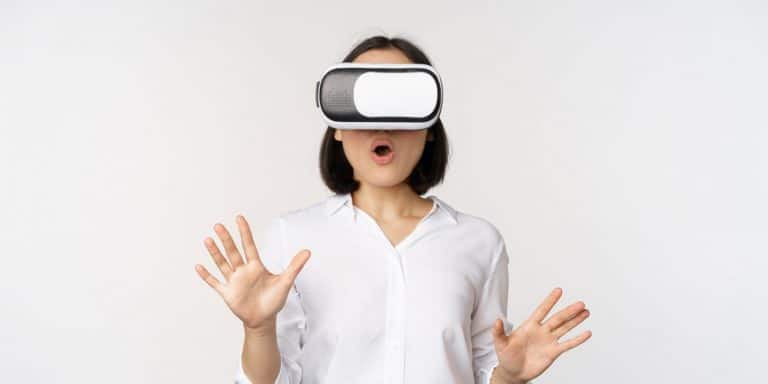It’s the 2020s and technology is evolving left and right. We have endless tools and access to information at the tip of our fingers along with a rapidly changing understanding of what it means to connect.
One thing that hasn’t changed? Human desire.
Most humans are sexual beings. People are curious about the human body and attraction and will find unique ways to feel the primal sensation of lust.
Enter the world of strip clubs.
For the United States strip club industry, revenue has grown over 5% over the past five years, reaching an estimated $7.4 billion in 2023.
With strip clubs making more money than ever, it’s no surprise that techies are looking for ways to innovate the strip club experience. We’ve seen people use virtual reality to simulate all sorts of experiences from gaming to education, so why not strip clubs?
How do VR strip clubs work?
For people to experience a VR strip club, they’ll need all the equipment necessary to enter a VR world like the Metaverse. This includes a VR ready laptop and headset. In addition to the headset, people taking exotic dancing seriously may invest in a full-body tracker (FBT) to help make their routines look as smooth as possible and let them do cool moves like splits and handstands.
There’s even something called a “haptic suit” that lets people feel when someone touches you in a VR world. These suits are becoming more popular in the Erotic Role Play (ERP) community. People are able to create their own avatars and be whoever they want to be.
According to VR users, there are privatized strip clubs in the Metaverse, and to get into these exclusive clubs, users often have to go through age verification and other hoops to gain access.
Dancers have to go through an onboarding process and agree to the rules of each club. Some of these clubs operate like real businesses with a tiered organizational structure, meetings, and staff members.
Are there perks to VR strip clubs?
VR strip clubs may level the playing field for people who aren’t “conventionally attractive” or fit the mold of your average stripper to still be able to capitalize on dancing. In the YouTube documentary “The Hidden Performers of the Metaverse”, some performers claimed that during a good month, they could make up to $2,000.
Most users claim that dancing in these clubs is less about making money, and more about self expression, getting the opportunity to be someone else and interact with people they wouldn’t normally. Others claim it’s great exercise and has helped them feel more comfortable in their bodies.
VR allows people who are trans or gender-diverse to try on avatars that feel gender-confirming and allow them to explore virtual bodies. Another user explained how dancing in VR helped heal trauma they experienced from dancing in real life.
One Reddit user described their experience: “Changing how you’re socially coded is a powerful drug. Some people have never been called beautiful until they put on an avatar.” They also allow people to become erotic dancers without the risk of potential social consequences or physical dangers that sometimes accompany real stripping.
Virtual reality affects real life
While a lot of sex workers are able to gain a sense of empowerment and financial freedom while maintaining their autonomy, that isn’t always the case. It’s not uncommon for strippers to face harassment or customers that disrespect their boundaries.
Virtual reality and other technologies are evolving so fast that regulations and social codes of conduct aren’t able to catch up. That makes strip clubs and the whole VR landscape a potential breeding ground for unethical behavior.
Virtual reality strip clubs give people the opportunity to engage in acts that may not be okay when you’re dealing with real humans, but would taking people away from real humans and putting them in front of a screen actually decrease unethical incidents?
It’s hard to say, but growing research shows that playing violent video games can increase aggressive thoughts, behaviors, and feelings in the short and long term. They can also desensitize people to witnessing aggression and decrease feelings of empathy. These effects increase the longer that someone is exposed to violent video games.
That doesn’t necessarily mean the same thing will happen when people go to VR strip clubs, but the theory shouldn’t be ignored, especially considering that users are reporting that female avatars tend to get harassed in VRChat.
Another ethical dilemma with these worlds is that you don’t really know who’s behind the screen. While some clubs claim they make dancers go through an age verification process, it’s difficult to confirm. There’s always a chance that users are engaging in ERP with a minor.
The Future of VR Strip Clubs
VR likely won’t take too much business away from real-life strip clubs. People going to virtual clubs may not even be the type of person who would go to one in the flesh. For many people, it gives them the opportunity to connect and explore their sense of self expression without judgment from their social circles. While we should continue to examine the ethics and regulations around these worlds, ultimately they’re just another aspect of a tech-fueled world.

